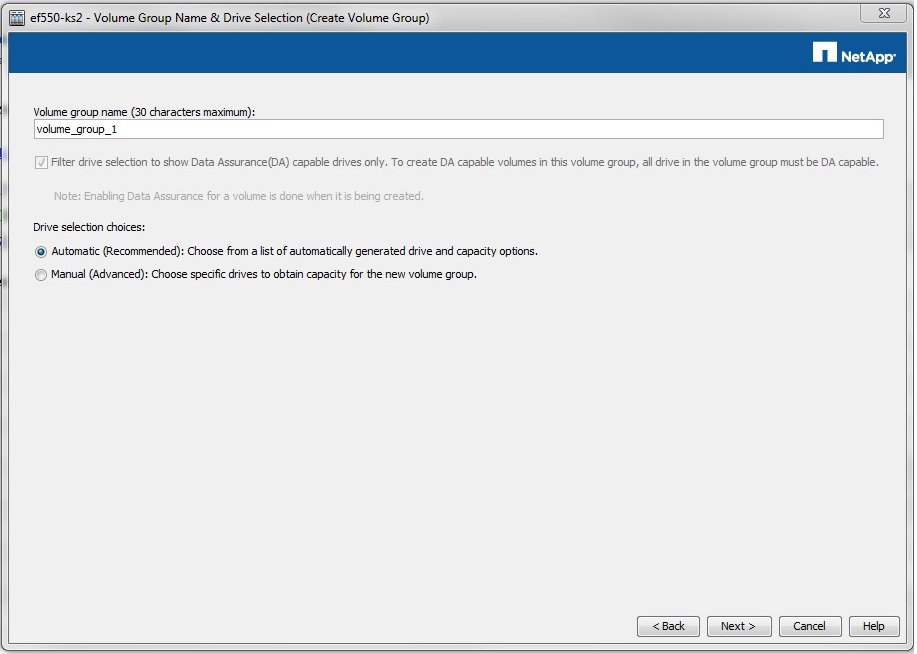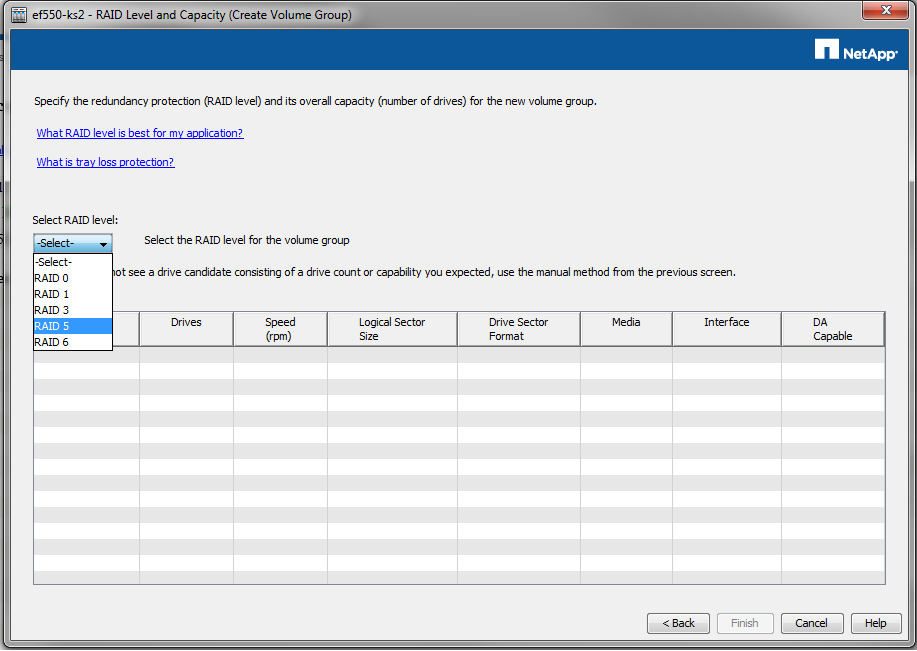How do Volume Groups differ from Dynamic Disk Pools in E-Series storage?
Applies to
E-Series storage
Answer
The table below shows the differences between Volume Groups and Dynamic disk pools in E-Series storage:
|
|
Volume Groups | Dynamic Disk Pools |
| RAID Selection | Yes | RAID 6 only |
| Segment Size | 32/64/128/256/512 KB | 128 KB fixed |
| Disk limitation | 30 | None |
| Disk selection | Yes | No |
| Volume Growth | Yes | Yes |
| Volume Shrink | No | No |
| Thin Provisioning | No | Yes |
| Disk Drawer loss protection | Yes | Yes |
| Disk Selection for volume creation | Yes | No |
| Reconstruction speed | Slow | Fast |
| Modification Priority | Lowest <-->Highest | High, Cannot be edited |
| Hot spare | Yes | No |
| Disk Preservation | No | Yes |
| Suited IO type | Sequential | Random |
Note: Hot spares are not required for disk pools. For disk pools, a certain amount of capacity is preserved for emergencies like drive failures. The maximum disk preservation is 10 disks (equivalent capacity is reserved in each drive in the pool).
Volume Group creation wizard:
- Volume Groups have an option to select the drives manually or automatically.

- The RAID Level can be selected.

Dynamic Disk Pool creation wizard:
- The drives are auto-selected.
- The Create Volume option in Dynamic Disk Pool (DDP) has the option to select thin volume.
Additional Information
N/A
